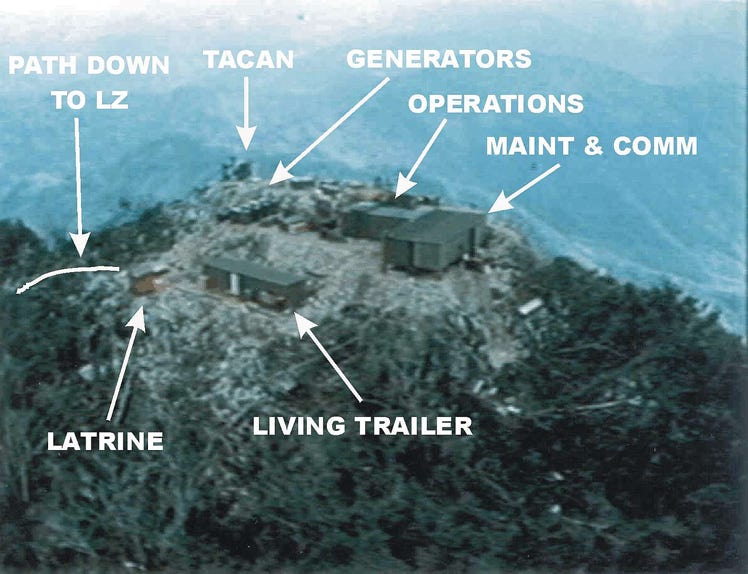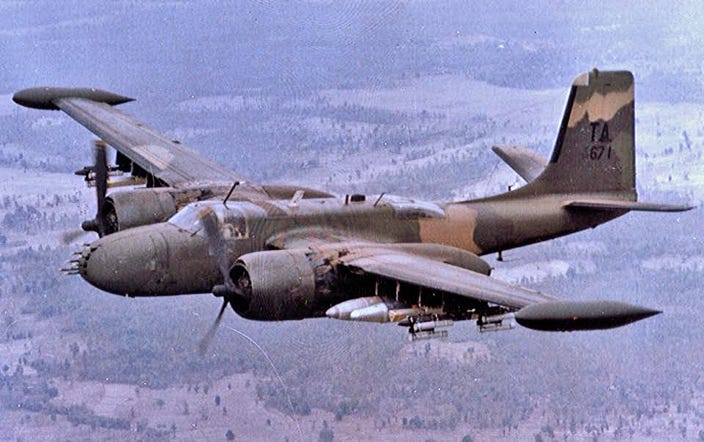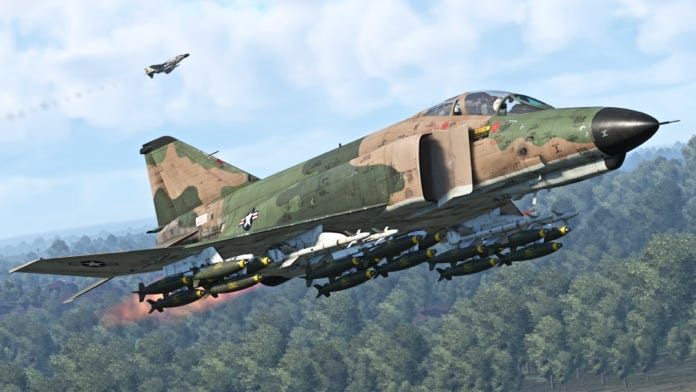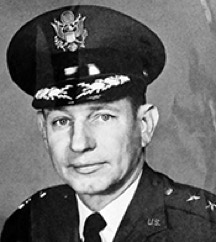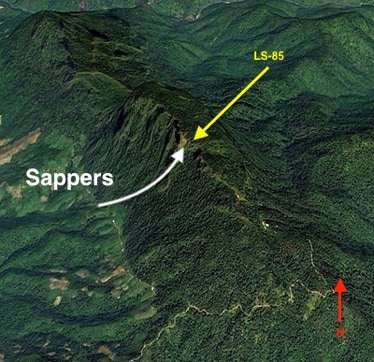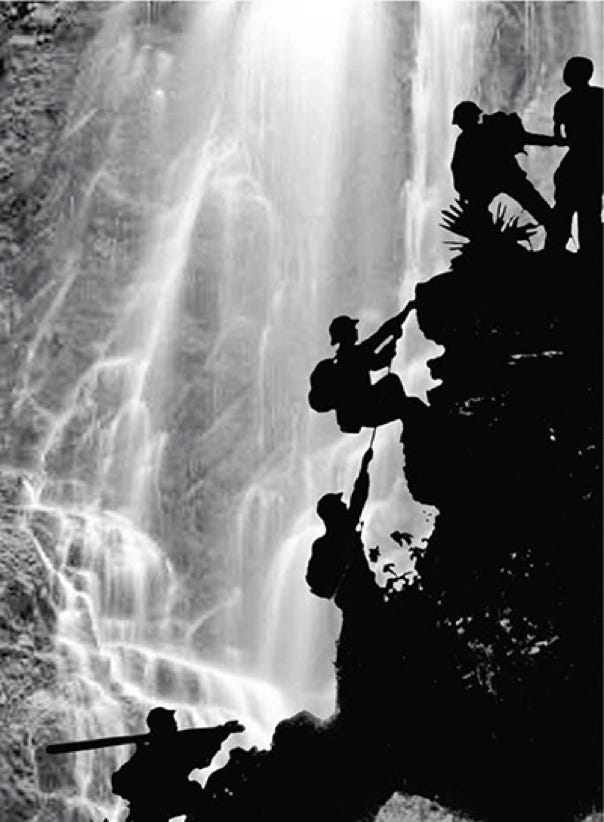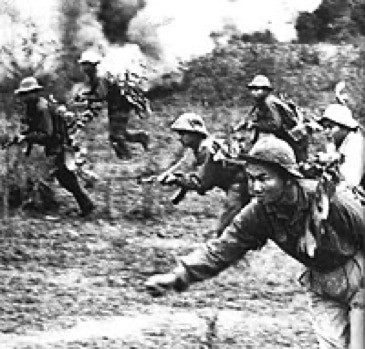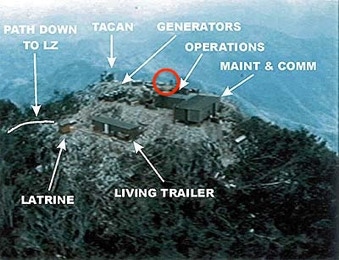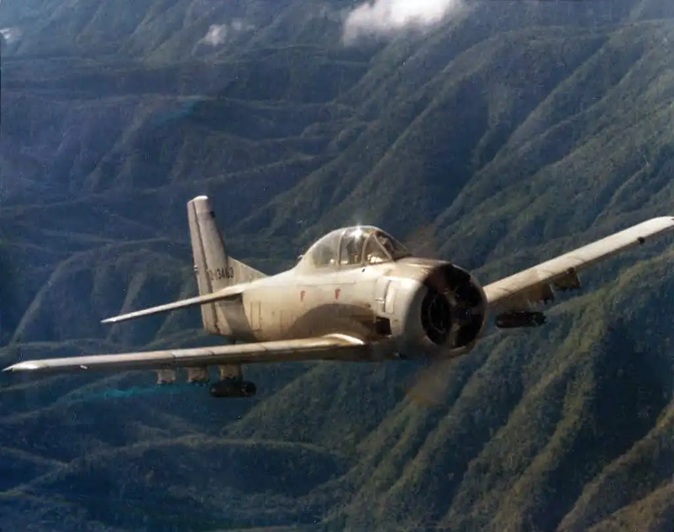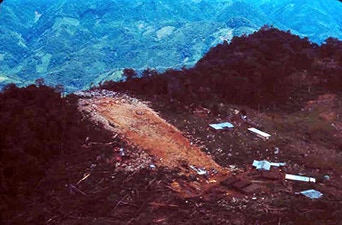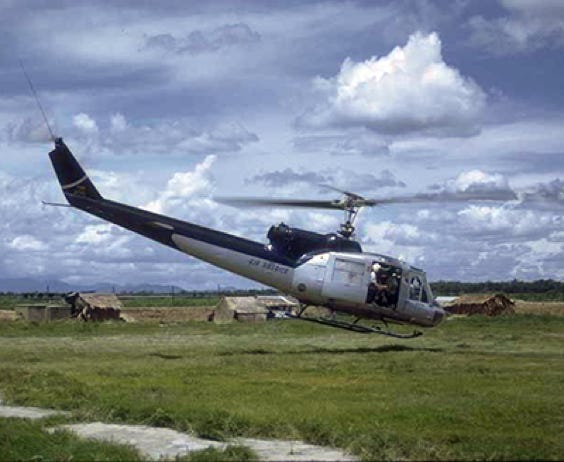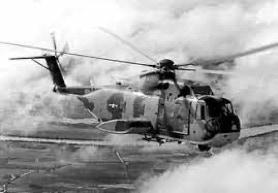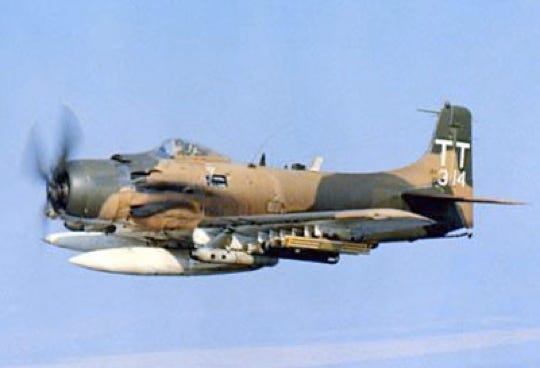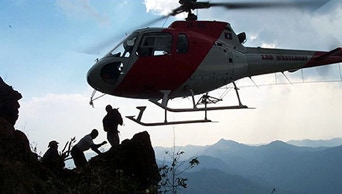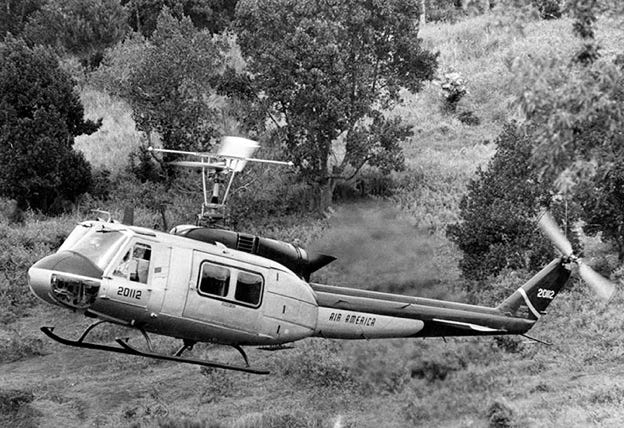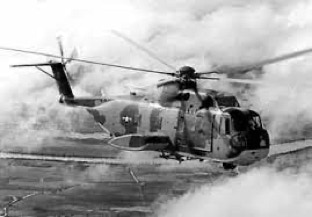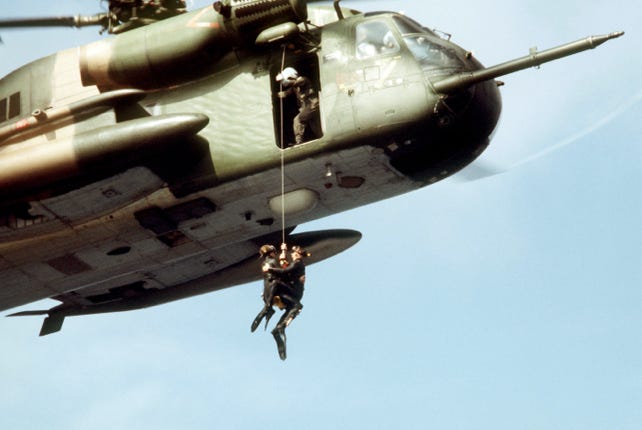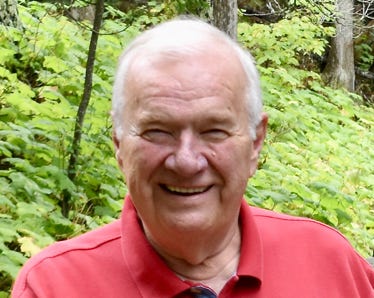DUTY, HONOR, COURAGE, RESILIANCE
Talking Proud: Service & Sacrifice
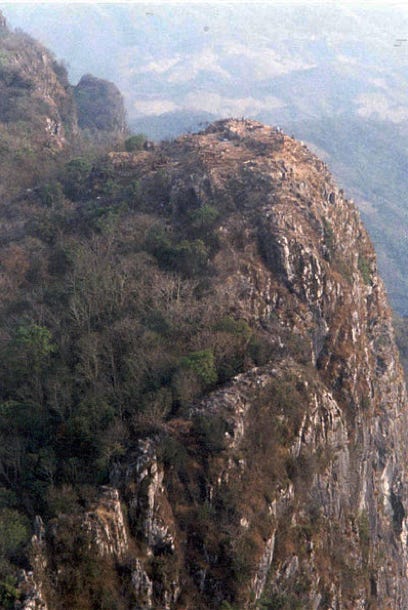
Lima Site 85, Laos: Exceptional Courage Against Impossible Odds
NVA attack LS-85
The NVA had collected a lot of good intelligence on LS-85, including equipment location, living areas, and gun emplacements. It also had a good look at the CIA command center and helipad area. It decided to attack. Unraveling the NVA attack is not easy. Three Airman died. Nine Airmen are unaccounted for.
Ken Conboy, writing The Erawan War, Vol. 1, said,
“During October 1967, the same month the radar became operational, a hand-picked commando team from PAVN’s (NVA’s) 305th Dac Cong Command was dispatched to conduct a
reconnaissance of the ridgeline.”
This team stayed in the area for a month.
The NVA launched a 30-minute mortar attack on January 30, 1968. The embassy wrote it off as a “probing attack.” CIA said,
"The North Vietnamese settled into a containment perimeter approximately 12 kilometers (7.2 miles) in diameter around Phou Pha Thi. Engagements between the Hmong and the North Vietnamese became infrequent, but those few encounters that did occur involved enemy formations of at least company strength."
On February 25, 1968, Shackley, the CIA honcho at the embassy, said,
“(The NVA) represents an imminent threat to the security of the TACAN site and other installations at Phou Pha Thi … It is not possible to predict, however, the state of security of Phou Pha Thi beyond 10 March because of the enemy’s willingness to continue to escalate his commitment to this area.”
The 7th AF responded by requesting full-time, around-the-clock TSQ-81 operations. This required the 1st CEVG team to man up for 24-7 duty.
One must wonder how the CIA in February selected March 10 as a cutoff date. March 10, 1968 was the day the NVA attacked.
Timothy Castle’s book, One Day Too Long: Top Secret Site 85 and the Bombing of North Vietnam highlights confusion over who could order site evacuation. General John Ryan, CINCPACAF, told the 7th/13th AF commander, Major General William Lindley that he was authorized to order an evacuation. However, the feeling in-country was that such an order could only come from Ambassador Sullivan. According to Castle, Sullivan said he received instructions that the site was to be kept open. That was the 7th AF position, but Sullivan was not in that chain of command.
The attacking force positioned itself near Muong-cau, in Muong-son District, about 40 kilometers (24 miles) northwest of Phathi. The attack team departed its base camp and moved to the assembly point. By March 9, the attack force had surrounded LS-85.
A few days earlier, 7th AF sent a message to PACAF that said, in part,
“Due to the desirability of maintaining air presence over [the North Vietnamese] during present inclement weather period, Site 85 probably would not be evacuated until capture appeared imminent. The fact that complete security could not be assured in the original plan is noted.”
The 7th AF position was clear: no one gets evacuated until “capture appeared imminent.” This flies in the face of Ambassador Sullivan’s control over US military events in Laos. As you read through the episodes that unfolded during the NVA attack on LS-85, and based on what you have read thus far, ponder when you might have made the evacuation call.
Castle’s book and Conboy’s rendition are the best accounts of the NVA attack on LS-85 I have seen. I have drawn from them and woven in survivor comments and other reports.
The NVA forces, sappers, and infantry surrounded Phathi Mountain at its base. The NVA had formulated and approved its attack plan.
Two USAF (Lockheed) Operations Teams were on duty at the mountaintop on March 10, 1968, led by Lt. Col. Blanton and Capt. Silz. These teams operated the TSQ-81 and TACAN. In response to the 7th AF tasking, they worked two 12-hour shifts. There were 16 there at the time of the attack.
It was about 1800 hours on March 10, the Sliz Team was coming off duty, and the Blanton Team was about to take charge.
During the Blanton-Sliz shift change, Blanton called all hands together and gave the men a threat briefing. He told them that an attack could happen at any minute and that they were surrounded. He mentioned that some men might be evacuated the next morning.
Despite this warning, the men decided to stay and continue operations.
They reviewed the evacuation plan and agreed the technicians would destroy the equipment and head down the footpath about 0.25 miles away to the helipad for evacuation. If unable to do that, they would remain at the facility and evade until help could come. They were told not to use the cargo nets draped over the cliff and hanging to the ledge. They were told they should not consider that ledge a safe hiding place.
Blanton’s crew manned the TSQ-81 and TACAN. Sliz’s crew readied to cook its steaks and prepare for its shift the next morning.
At about that same time, the CIA people down at their command center, knowing many NVA troops were in the neighborhood, shot off several white phosphorous rockets toward the east over the shallower slope of Phathi, apparently as some wakeup call, a “Hey, we know you’re there” type of thing.
The NVA immediately responded with heavy mortars and rockets, firing at the helipad and the CIA compound. Airman First Class (A1C) Roger Huffman, the air controller, was in the CIA building and ran across the helipad to his bunkered radio position, a savvy move by a young Airman whose job it was to control tactical air support.
Along with the attacks down by the CIA compound and helipad, an NVA artillery round struck a 105 mm howitzer protecting the mountaintop site at about the time Blanton’s briefing was over. Another shell hit the living quarters, and another hit the bunker.
Blanton’s team and some support personnel remained inside the TSQ-81 and TACAN vans to run attack sorties against the NVA in the area.
Sliz’s team ran to the nearby bunker. However, a rocket had hit the bunker, so they decided against it. They high-tailed it to the ledge below the equipment, which they were told not to use. General Secord commented in his book,
"These technicians apparently (and understandably) had little faith in higher echelon's ability or commitment to save them, so they decided, in extremis, to help themselves."
SSgt. Jack Starling had been operating the TACAN. It was working, so he decided to go to the north side of the mountaintop, away from where Sliz’s team went. Starling found a boulder, hid behind it, and remarkably, fell asleep. He felt pretty secure as the artillery rounds were going over him to other points. Sliz’s people also felt reasonably secure on or near the ledge as it protected them from artillery coming from the east.
NVA infantry was attacking the helipad and CIA areas. The Hmong were now engaged, mainly in the CIA area and in and near the Hmong Phathi village on the shallower east slope. An Air America UH-1 pilot, John Tarn, produced a video of photos he took in Laos. He took this one of the village.
None of this came as a surprise to the operators. They knew the NVA was coming for them, yet some still felt secure, counting on the Hmong on the eastern slope to protect them, figuring friendly aircraft would come in to suppress the NVA, and feeling no one could scale the steep cliffs. There were about 1,000 Hmong at LS-85 at the time.
Someone, probably from Lt. Col. Blanton’s crew inside the TSQ-81 van, contacted the 7th/13th AF Tactical Air Control Center (TACC) at Udorn RTAFB and briefed them that they were under attack and would be off the air for a while. Blanton then contacted the CIA bunker and learned of the NVA attacks down there.
At about 1830 hours, a single aircraft arrived on the scene. A1C Huffman directed the pilot's attacks from his radio bunker on the east slope. It was dark; the pilot did his best but left and had little effect.
In the CIA area, Howie Freeman, a CIA case officer, and John Woody Spence, a CIA paramilitary officer, alerted everyone within their sphere of influence, CIA Udorn and Embassy Vientiane, to what was in train.
The embassy notified the Rescue Coordination Center (RCC) at Udorn that evacuation might be possible.
At some point around this time, the White House was notified.
The Udorn TACC diverted several C-130 flareships, known as “Lamplighters,” A-26 Nimrod (top) special operations attack and bomber aircraft, and F-4 Phantom (below) fighters to LS-85. The Lamplighter got there at 1930 and fired off some flares to light up LS-85, which had become a battlefield by now.
NVA shelling stopped at about 1930, no doubt because the NVA saw the application of airpower against them. The USAF and CIA people at LS-85 felt relieved.
Blanton’s crew went back to work directing aircraft against nearby targets.
Sliz’s Crew on or near the ledge decided to get some sleep to prepare for the next day’s shift. Given that the shelling had stopped, they went to the living area but decided it was unsafe, so they grabbed some gear and headed back to the ledge. SSgt. John Daniel and TSgt. Donald L. “Monk” Springsteadah slipped down the mountainside onto the nearby ledge below the ridgeline. Capt. Sliz, CMsgt. Richard “Dick” Etchberger “Etch,” and SSgt. Henry Gish remained on top but just below the ridgeline, working the radio with the pilots above.
The A-26s and F-4s attacked their targets with the help of the flare ships, the TSQ-81 operators in contact with them by radio, and A1C Huffman. Blanton’s crew became concerned that the incendiaries meant to blow up the TSQ-81 could be detonated with all the fireworks, so crew members threw them over the side of the mountain.
At 1955 hours, the Air Attaché at the Vientiane Embassy notified Washington's Defense Intelligence Agency (DIA) of the situation. The Attaché told DIA that the state of affairs at LS-85 was critical; the site was receiving incoming artillery, mortar, and small arms fire, but evacuation had not yet been considered.
While all these events were happening, and unbeknownst to the men on Phathi mountaintop, an NVA sapper team of 21-27 men was scaling the steep western cliff of Phathi Mountain, intending to attack. Comboy said an NVA infantry battalion followed behind the sapper team up the cliff.
Between 2000 and 2130, NVA shelling resumed, this time coming from the south. The Hmong were in heavy fighting down on the eastern slope, especially on that part of the slope hosting the Phathi village where many of them lived. A1C Huffman spent much of the night controlling attacking tactical air.
The RCC alerted two rescue crews from Detachment 2, 37th Aerospace Rescue and Recovery Service (ARRS), Udorn RTAFB, at 2230. They were tasked to fly HH-53 Rescue helicopters called “Jolly Greens.” One crew was designated Jolly Green (JG) 67, while the other was JG 69.
The Jolly Greens routinely flew with A-1E “Sandy” fighter protection (similar to those shown here). The HH-53 and A-1E crews went to the TACC to be briefed. One of the pilots, Capt. Russell Cayler, USAF, JG 67, said, “We knew the site was going to be overrun. We knew that the night before we were going in.”
At 2121, Ambassador Sullivan said he would evacuate some non-essential USAF operators at first light the following day, March 11. At 2150, the embassy sent a message to the RCC notifying them of a possible evacuation at first light on the 11th.
MGen. Lindley, USAF, deputy commander of the 7th/13th AF, decided that evacuation would occur only as a last resort, in accordance with the 7th AF instructions to stay operational until “capture was imminent.”
The 7th AF was having a field day with the TSQ-81 directing flights against the NVA in this neck of the woods and did not want the TSQ-81 off the air. The TSQ-81 was installed at LS-85 to attack deep targets in NVN. However, the 7th AF saw a significant advantage in decimating NVA forces in northeastern Laos to weaken the NVA overall. This explains why the 7th AF wanted the TSQ-81 to stay on the air.
It is now March 11, 1968.
At 0010-0015, either the embassy or CIA Udorn told the RCC that there would be six men for evacuation at first light. Then, at 0200, the RCC was told to evacuate the wounded regardless of nationality. The CIA people wanted to protect the Hmong for whom they were responsible.
The “unthinkable” happened at about 0200. Some 21-27 sappers (I have also seen 33) emerged from the cliff. These sappers had scaled the very steep western cliff to the top. The sappers, divided into two teams, walked and encircled the site. They were armed with automatic weapons, presumably AK-47s, and grenades. Remember Conboy’s report that an NVA battalion followed the sappers up the cliff.
Their job was to kill Americans and capture the TSQ-81 and TACAN. The sappers went about their business according to plan.
My reading of events as they emerged is that three battles would evolve once the sappers emerged on the mountaintop:
- Northside ledge centered on SSgt. Starling and Blanton’s crew
- Westside ledge centered on Sliz’s crew
- CIA-Hmong compound battle, Freeman, Spence, Huffman
Remember that tactical air support had arrived and that friendly aircraft attacked enemy positions throughout the three battles. Furthermore, fighting occurred in all three spots at about the same time.
Northside Ledge: Starling and Blanton’s crew
The fog of war dominates the picture concerning Blanton’s crew inside the TSQ-81 van. In the tumult of battle, situational perspective is often riddled with uncertainty, and the human mind is often unable to comprehend all the variables. That different remembrances would emerge is understandable.
Reconstructing this battle in my mind was most difficult.
In his book, Timothy Castle reported that Blanton’s crew consisted of the TSQ-81 operators and some support people—ten in all:
Lt. Colonel Clarence “Bill” F. Blanton (remains found)
MSgt. James Calfee
TSgt. Patrick Shannon (remains found)
TSgt. Melvin Holland
TSgt. Willis Hall
SSgt. Donald Worley
SSgt. David Price
SSgt. Herbert Kirk
SSgt. James Davis
SSgt. William “Willy” Husband (rescued)
Of these ten men, only one survived, SSgt. William “Willy” Husband.
The remains of TSgt. Patrick Shannon were recovered years later when a member of the Joint POW/MIA Accounting Command (JPAC) “scaled down the cliffs … (and) recovered remains and personal gear on ledges. The remains were identified through DNA and other forensic techniques as those of TSgt. Patrick Shannon.
The remains of Lt. Colonel Clarence “Bill” Blanton, along with his ID card, were recovered in 2005 at the base of Phou Phi Thi and were identified through DNA analysis as his in 2012.
The remains of the other seven have not been recovered. The Air Force has listed them all as Killed in Action (KIA).
The red circle on the diagram to the right is my guesstimate of the northern ledge area. I have seen multiple explanations of what might have happened to these eight men.
This summarizes the varied explanations I have seen:
- The technicians on duty exited the TSQ-81 van using the back door and, in short order, came under fire at close range. This report suggested there was a chance three of Blanton’s men were killed by enemy fire inside the TSQ-81 shelter. The mention of three men being killed inside the shelter strikes a chord with me. Castle wrote that a man who said he was leading the sapper attack revealed he and his men got inside the TSQ-81 operations shelter, opened fire, and “killed some Americans on the spot.” Having read many reports of the NVA attack on the mountaintop, I have noted that three men have not been mentioned by any of the survivors. We’ll never know, but I wonder whether these three never got out of the TSQ-81:
- Sgt. Donald Worley
- SSgt. James Davis
- SSgt. Herbert Kirk
- Shannon, Calfee, and Blanton, after hearing small arms fire, exited out the front door, and all three were shot at point-blank range. This report said Calfee was hit in the face and upper chest but was able to crawl under the operations building with his weapon, after which he began firing at the enemy.
- SSgt. Starling, the TACAN operator, left the TACAN shelter after confirming the system was operational and went to a ledge area on the north side of the mountaintop. He explained, "Then behind us the Vietnamese started shooting everybody with machine-gun fire. One of the first guys hit was hit by a hand grenade in his right arm. It was completely off. He brought me his M-16 because mine was still down in the shelter … Me and another guy were lying side by side and these two Vietnamese came down to where we were and jumped over him and landed on my ankle. I had been hit earlier by sniper fire, in the leg. When they jumped over him, they turned around and just opened up on him. How they missed me, I’ll never know. On the other side of the rock about three feet away a guy was calling for help. Because of his arm he was bleeding to death. They heard him and went over and just opened up on him. I didn’t see it, but I could hear it. The guy next to me had his leg over mine to keep from kind of falling over the cliff. They got him pretty good, and at that point I figured I was dead.”
- Several men, including Shannon, Holland, and Husband, were on a ledge with Starling. Holland reportedly had lost one of his arms to a grenade and was leaning against a rock moaning when the sappers moved in. All the men in this grouping were killed except Starling, who played dead.
- Two operators emerged from the TSQ-81 and were shot down immediately. Then, four others emerged. A grenade felled one. One was severely wounded and in great pain. Nothing was seen of the other two.
- Willis Hall joined Starling behind a boulder, and “within minutes Bill Blanton, Mel Holland, Pat Shannon, and David Price were also seeking safety in the small flat depression some ’20 to 30 feet’ from Starling’s and Hall’s location.” These men had weapons and were firing at the sappers. Starling said, “Holland’s arm was blown off, and he was on the ground, moaning in pain. Price was lying next to Holland, dead. Blanton and Shannon were lying together on the ground, neither was moving. The sappers heard the men in their agony, at which time, “I heard them open up with a machine gun, and then it got quiet. They killed the man next to me, and how they kept from hitting me, I’ll never know.” He managed to pretend he was dead. The NVA proceeded to fire into the bodies lying around Starling. The NVA took time to steal watches and any money the men had on them.
My takeaway from these remembrances is that at least seven of the men in the TSQ-81, and perhaps all ten, got out of the van but were subjected to intense hostile fire almost immediately. Three may have been killed inside the van. You can practically visualize the frenzy and horror of the situation for these Airmen.
Only Willy Husband survived. He managed to get out and hide in a location close to Starling.
Whatever the case, Blanton’s crew was exposed to a very hostile situation once the sappers emerged on the mountaintop. Altogether, seven from Blanton’s crew are unaccounted for. Tragic indeed.
Westside ledge centered on Sliz’s crew
Recall that Sliz’s crew went to a different area than Blanton’s crew. Keep in mind that the total area on the mountaintop was quite small. In my view, sappers and TSQ-81 operators would have found it quite congested in the fury of battle The red circle on this graphic is my guesstimate of where this crew went. These men were besieged as well. Sliz’s Crew included:
Capt. Stanley “Stan” Sliz (rescued)
CMSgt. Richard “Dick” Etchberger “Etch” (rescued and died)
TSgt. Donald “Monk” Springsteadah
SSgt. Henry Gish
SSgt. John Daniel (rescued)
The situation with Sliz’s crew is more straightforward.
Daniel and “Monk” slipped down the mountainside onto the nearby ledge below the ridgeline. Capt. Sliz, “Etch,” and Gish remained on top but just below the ridgeline, working the radio and talking to the pilots above.
Sliz said the automatic weapons fire came “from the vicinity of the outpost on our inner perimeter.” He commented, “We all stayed on the side of the mountain for about three hours until the barrage ended.” Daniel underscored this, saying, “We remained there, and sometime during the night, there was lots of small arms fire and grenades.”
Later on, they heard footsteps and voices above them. Sliz said,
"We heard all this commotion going on above us, guns firing, grenades popping. Soon, everything became still. Etch was watching the trail above and whispered, 'Stan, there's people coming!'” Sliz responded, “When they get close enough, shoot.” Etchberger then fired his M-16 at the sappers. Sliz commented, “Almost immediately, all hell broke loose. They opened up on us from all over, throwing grenades and firing their AK-47s.”
Sliz continued,
“The first burst killed Hank (Gish), and that's when I was wounded in my thighs. John (Daniel) also was wounded on the first attack. The pain was unbearable, but we just managed to fight them off. I don't recall ever looking at my watch or wondering what time it was. We were more interested in trying to stay alive, using our weapons, and firing back.
“Grenades kept coming in, bullets fragmenting all around; I soon reached the threshold of pain where I just didn't feel anything anymore; I felt my body vibrating from the hits. It became just like the nuisance of standing in a heavy rainstorm. Another grenade came in, but I couldn't reach it. I thought about jumping onto it, John said, 'Here grab Hank, he's dead.' So I took Hank and went on top of the grenade. It blew us back, the concussion knocking me out. When I came to, pieces of Hank were all over me. But the rest of us weren't killed. I got a real big piece of it in my thigh and saw that my hand appeared mangled but seemed usable. But we didn't get killed by the grenade. I thought I was close to death, and the thought flashed through my mind, 'So this is what it's like to die. I wonder what the final feeling is like?’”
Daniel said,
“Gish was hit first. I believe that Monk (Springsteadah) and Stan (Sliz) were hit and Monk’s was fatal. Then I was hit in both legs, and Gish was hit again, and this one was fatal. During this time, only Dick (Etchberger) and I were able to defend ourselves and the others, at this time only Stan was alive. Dick never got hit during this time, and (he) was directing me on what was taking place and what to do. If I recall correctly, I had the only radio that worked and was talking to the aircraft.”
One sapper cell attacked and took the communications site. A cell attacked the TACAN and assaulted the living quarters (tents).
Between 0600 and 1700 on March 11, jet aircraft and T-28s (such as shown here) strafed and dropped cluster bombs and high explosives in and around the TACAN site. Incoming fire stopped just before 0700, March 11, 1968.
CIA-Hmong compound battle
Recall that at about 1800 hours on March 10, the Sliz Team was coming off duty, the Blanton Team was about to take charge, and the CIA people down at their command center, knowing many NVA troops were in the neighborhood, shot off several white phosphorous rockets toward the east over the shallower slope of Phathi. I believe this CIA action contributed to the NVA launching its attacks at the time they began. This is a photo of the helipad. I think the CIA command center was adjacent to it.
The NVA immediately responded with heavy mortars and rockets, firing at the helipad and the CIA compound. A1C Roger Huffman, the air controller, was in the CIA building and ran across the helipad to his bunkered radio position, a savvy move by a young Airman.
On March 11, 1968, at about 0200, Howie Freeman of the CIA lost contact with the TSQ-81 operators.
At the Embassy in Vientiane, the Ambassador lost touch with the situation after 0300, and radio contact was not re-established at the helipad until about 0500.
Back down on the helipad, between 0400-0500, A1C Huffman heard a lot of gunfire and could see the NVA running across the helipad. The Hmong near him were engaged heavily with the NVA.
Between 0545 and 0630, Howie Freeman and Woody Spence left their bunker and ventured to the helipad. Conboy said, “There they found a chaotic mob of Hmong and (Thai) troops.” Freeman and some Hmong then advanced up the path toward the mountaintop. They received some fire. Freeman was able to get up to the top and look around. He said he did not see any Americans or any bodies. Freeman was hit in the left leg. They withdrew back to the CIA operations area.
A-1E fighters and an O-1E FAC were orbiting overhead and attacking NVA forces. Conboy said Freeman told the FAC by radio that no living Americans were alive. The fighters then attacked the radar site. Castle seems to agree; at some point in the 0700 hour, “Freeman ordered Huffman to direct the A-1E/A1-Hs to begin bombing the guns and the TSQ-81 site.”
Again, the fog of war. But there were Americans alive on the mountaintop.
Rescue Operations
Once General Vang Pao heard about the attack, he directed a Long Tieng-based reserve battalion to be airlifted to LS-36 in case a counterattack was needed. However, the battalion could not arrive in time.
On the early morning of March 11, 1968, Air America Captain Ken Wood and Flight Engineer “Rusty” Irons, piloting an Air America (AA) UH-1 Huey helicopter, departed the CIA base at Long Tieng, LS-20A and headed to LS-36 at Nha Khang on a routine mission. They heard a survival radio beeper on the “Guard" channel and diverted to the northeast.
Two Jolly Green rescue helicopters launched from Udorn at 0046 on March 11 and headed to LS-85, about 220 miles to the northeast, the way the crow might fly, roughly two hours away.
At about 0215, two A-1E Sandy fighters left Udorn to marry up with the Jolly Greens.
At about 0300, John Tarn, an AA UH-1 pilot, said he led a three-ship UH-1 flight from LS-20 Sam Thong to LS-85 and met up with the Jolly Green flights.
At 0735, the AA UH-1 approached Phathi and observed A-1E fighters attacking a gun emplacement captured by the NVA. They spotted Sliz’s men on a ledge, maneuvered, hovered close to the cliff, and dropped a hoist cable.
The photo shows a helicopter used by a Joint Task Force-Full Accounting (JTF-FA) hovering over what was said to be "Ledge Number 1." This ledge was not the ledge on which some technicians had gone to hide. I show the photo to give an idea of what it was like for a Huey UH-1 helicopter to hover over a ledge to pull up survivors,
SSgt. Daniel was lifted to the UH-1 and got inside. CMSgt Etchberger helped Capt. Sliz to the hoist. He was rescued and got inside. Etchberger then prepared to grab the hoist for his rescue. In all the commotion, SSgt. Willy Husband heard the helicopter and started running to it.
Husband spotted SSgt Starling, who was unable to walk, and Starling told Husband, “Tell ‘em I’m here.” Husband reassured Starling and continued running to the UH-1.
The American Heritage Series described the rescue in some detail.
Husband grabbed the hoist as Etchberger was being lifted. The UH-1 started receiving ground fire. Both Starling and Etchberger were hoisted, and both were brought aboard.
The American Heritage Series continued:
"Just as Etchberger was about to be hoisted up, Bill 'Willie' Husband, a diesel mechanic who had been hiding since escaping the Dac Cong's machine gun assault six hours earlier, appeared from the brush. Etchberger grabbed onto Husband in bear-hug fashion, and Irons started hoisting them up together. With the men clinging together on the hoist seat beneath the helicopter, the Huey was strafed by enemy ground fire, forcing the pilot to pull the Huey away from the ledge. Irons managed to drag Etchberger and Husband into the helicopter. Suddenly, a half-dozen armor-piercing bullets tore through the helicopter floor, right beneath Etchberger. One of the bullets entered his lower body."
The UH-1 flew to LS-36. Etchberger bled out and died.
At 0820, an AA UH-1 made it to the LS-85 helipad. Wounded Thai and Hmong were loaded aboard and flown to LS-36.
At 0846, Jolly Green (JG) 69, piloted by Capt. Al Montrem, USAF, arrived at the helipad, picked up 32 indigenous soldiers, and flew them to LS-36.
At about 0900, an AA UH-1 arrived at the helipad to extract Woody Spence and A1C Huffman. Thai and Hmong soldiers jumped aboard, and Spence ran back and forth to the CIA operations area to pick up records. Spence climbed aboard, and they were flown to LS-36.
The Hmong at the base of the mountain held until about 0730. The Hmong forces at the mountain were outnumbered, and as predicted by all hands at the US embassy, they could not hold. They finally withdrew into the hills, leaving a large cache of weapons and equipment.
The enemy attack appeared to cease at 0900. SSgt. Husband did relay the news that Starling was alive and still on the mountaintop. Jolly Green, 67, loitering in the area, was informed and went to the mountaintop. Capt. Russell Cayler was the pilot, along with Capt. Joseph Panza, both USAF. They dropped a pararescueman (PJ) onto the mountaintop. He was Sgt. James “JJ” Rogers, USAF.
Rogers searched around and saw at least five to seven bodies and many more enemy dead. Incredibly, Starling reached out to him and grabbed him on the shoulder. Rogers helped him to the Jolly Green. They took the hoist together and were lifted, but not all the way. Capt. Cayler lifted his HH-53 in the air with both men still hanging below the aircraft. Cayler flew to where he felt he was beyond enemy fire and brought the hoist up. Starling and Rogers got in, and they flew safely to LS-36.
Starling talked a bit about this rescue. Remember, he had been playing dead and was lying among his deceased colleagues:
"I was by myself. It seemed like twenty hours, but it was only five or six hours. I just stayed there and kept still because I didn’t have anything to protect myself with. And then, when the helicopter came in, all I had was a flashlight that had different lenses on the bottom. So I held the red lens over it and was pointing it towards the chopper. He couldn’t land and had to lift me up with a line. I felt lucky to get out and glad they came back for me."
I’ll close this section with these remarks from Capt. Sliz on the notion of surrender. He said,
“I know at one time someone, I don't know who, brought up the idea that maybe we should surrender. I said I thought that was BS, because I was pretty sure that they weren't taking any prisoners. I remember turning to John (Daniel) and saying, 'They couldn't take us anyway, you're shot in the legs, and so am I. There's no way we could walk out of here.'”
The NVA was in complete control of the mountain on March 11. This force remained to defend the mountain on March 12 and 13 and withdrew on March 14. The NVA estimate was they killed and wounded 42, mostly Thais and Laos.
Click to zoom graphic-photo
